Chapter 24
Christians in a Roman World
Celsus Confronts Christianity
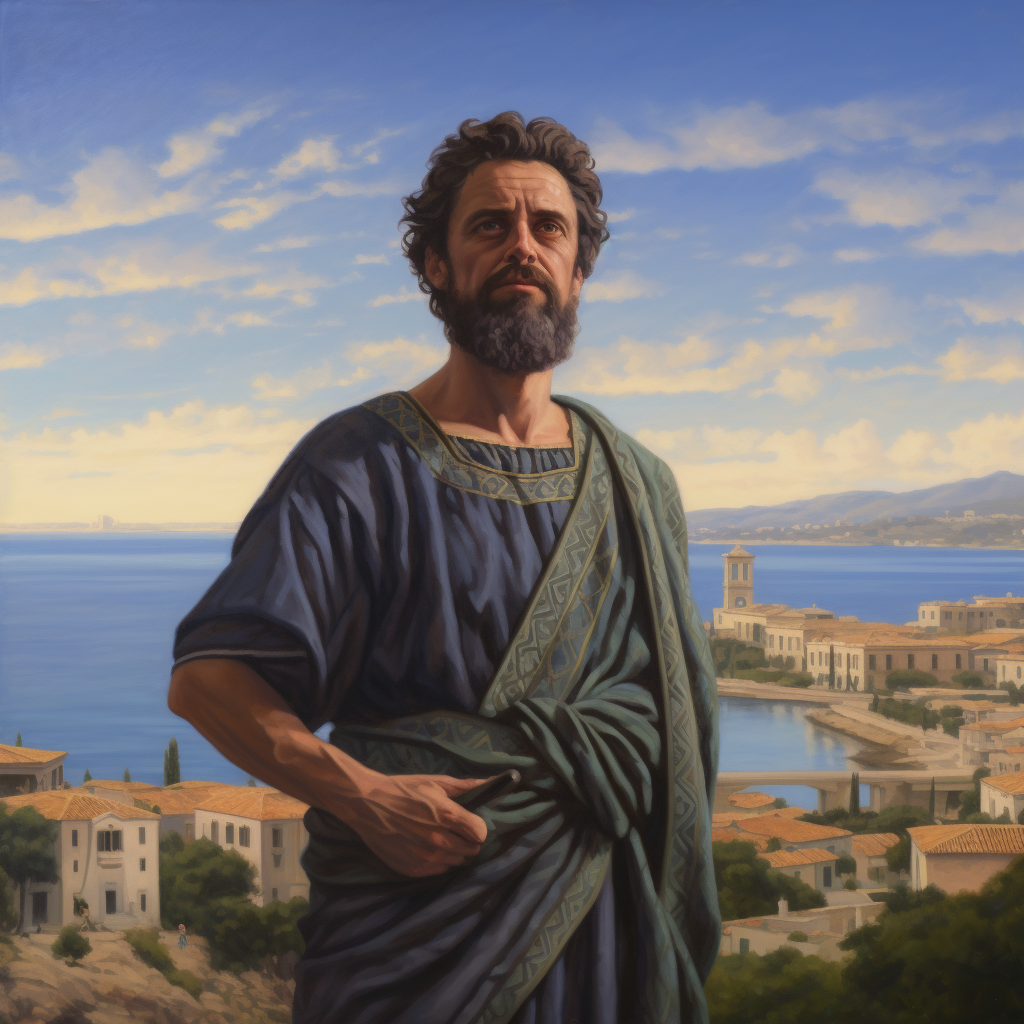
The wider world of the Roman Empire had difficulty understanding Christianity and its adherents’ odd beliefs and practices for the first two centuries of its existence as a minority religion in the realm. Almost certainly there were many writings produced during this time which took a critical or negative view of the fledgling faith—such as the no-longer-extant treatise from the philosopher Porphyry that is occasionally mentioned in passing by early Christian authors.1Hoffman, J.R. (2009). Porphyry’s Against the Christians. Prometheus. But due to a thorough later campaign of suppressing and destroying copies of such critical writings, today we have access to only one such work—and even that, indirectly. On the True Doctrine by a writer named Celsus survives only because a later Roman Christian elder devoted an entire book to rebutting it, and in the process directly quoted nearly 70% of its text.2Gottheil, R. & Krauss, S. (1906). “CELSUS (Kέλσος)”. Jewish Encyclopedia. Kopelman Foundation.
Celsus, like many educated Greeks of his day, was a Platonist and believed—like Plato who lived 400 years earlier—in a single, transcendent, ineffable Supreme God who created the universe and who is benevolent, but also beyond all emotion. Such a deity has no desire or need for worship. Humans are endowed by this creator with reason and intelligence, and, argues Celsus, should use these faculties to test any proposed doctrines about the world. The study of poets and philosophers is also hailed as greatly beneficial.3Freeman, C. (2009). A New History of Early Christianity. Yale University Press.

One of Celsus’s first criticisms of Christians is that they attempt to take a shortcut to finding ultimate truths. They often deride the hard won wisdom of philosophers as mere “foolishness”, claiming to have “real wisdom”, while at the same time demonstrating their utter credulousness, believing in so-called miracles performed by deceivers and magicians. He observes that Christian preachers often target city simpletons and country bumpkins, and he expresses dismay that believers typically respond to criticisms of their faith by saying things like, “Do not ask questions, just believe.” He chides Christians for instructing their children not to believe their own teachers, and for telling them that they will only find happiness in Christ. Worried over their growing numbers, Celsus is dismayed that the Christian myths of a virgin birth, a crucified god-man, and the resurrection are becoming more popular than the writings of the once renowned philosophers.4Freeman, C. (2009). A New History of Early Christianity. Yale University Press.

Obviously well-studied and informed about Christianity, Celsus is aware of the different branches of the religion and their various differences, citing the Jewish-Christians, the Marcionites, and the Gnostics. He even makes mention of multiple church sects led by women, of which no other record exists. All these groups, notes Celsus, “utterly detest each other.” Their widely diverging and contradictory views are evidence to Celsus of the lack of a strong philosophical foundation.5Freeman, C. (2009). A New History of Early Christianity. Yale University Press.
The belief that the Jewish scriptures somehow “predicted” or “pointed to” the coming of Jesus is dismissed by Celsus, who in his reading, sees only vague predictions of a great prince who will lead the nations, and nothing foretelling a “low-grade character like Jesus”. Records of his miracles are counted as nothing by Celsus in terms of proving his divinity, as these acts are indistinguishable from the many other accounts of exorcists, healers, and magic workers he has read.6Freeman, C. (2009). A New History of Early Christianity. Yale University Press.

Celsus takes a harsh view of the god of the Hebrew Bible. Displays of jealousy, anger, repentance and other human emotions are considered very unbecoming of a supreme deity. Even the gnostic demotion of Yahweh to a lesser—or even wicked—demigod ultimately solves nothing, only begging the question of why a true God would allow such a terror to rule Earth. But Celsus does see Jesus as a fitting messenger of such a malevolent God, announcing that the majority of humankind will suffer eternal punishments in hell while only a small group of elect are saved.7Freeman, C. (2009). A New History of Early Christianity. Yale University Press.

While Celsus, as a Platonist—like the influential Philo Judaeus of Alexandria a century before him—believed in intermediary beings granting access between humans and God, he cannot possibly comprehend why such a messenger figure would himself be worshiped as a god. The very notion of a divine personage mingling with lowly human flesh is a notion he finds abhorrent. Nor can Celsus understand, if such a figure was of such necessity and such a help to humankind, why would God wait so very long into history to send him? He further puzzles over the notion of a millennia-long struggle between God and Satan, which seems indicative of a god too impotent to overcome one of his own creations.8Freeman, C. (2009). A New History of Early Christianity. Yale University Press.
On an institutional level, Celsus is concerned that Christians withdraw from public life and the rites and rituals that bond society together, instead meeting in secret like thieves. Like conservative alarmists down to the present age—such as those who predicted societal collapse if same-sex marriage became legal—Celsus predicts that if the Empire were to adopt Christianity as a state religion, it would result in the end of the rule of law and a return to the chaos of the savage barbarian lifestyle.9Freeman, C. (2009). A New History of Early Christianity. Yale University Press.

With their obsession over sin, sinning, and sinners, Celsus compares Christians to adherents of the other salvation religions of his day that actively recruit initiates. Similar to how we’ve seen these “mystery cults” operate, Celsus observes that the more intelligent Christians view the meaning of Christ in allegorical terms, but the majority of them naively accept its myths as literally true.10Freeman, C. (2009). A New History of Early Christianity. Yale University Press. This is consistent with the reconstruction of the history of early Christianity presented in this book: that what began with belief in a purely heavenly Lord Jesus, within its first 50 to 60 years developed a “historical” allegorical myth for its initiates which—within another 50 to 60 years—became its dominant theology.
Montanus and Tertullian
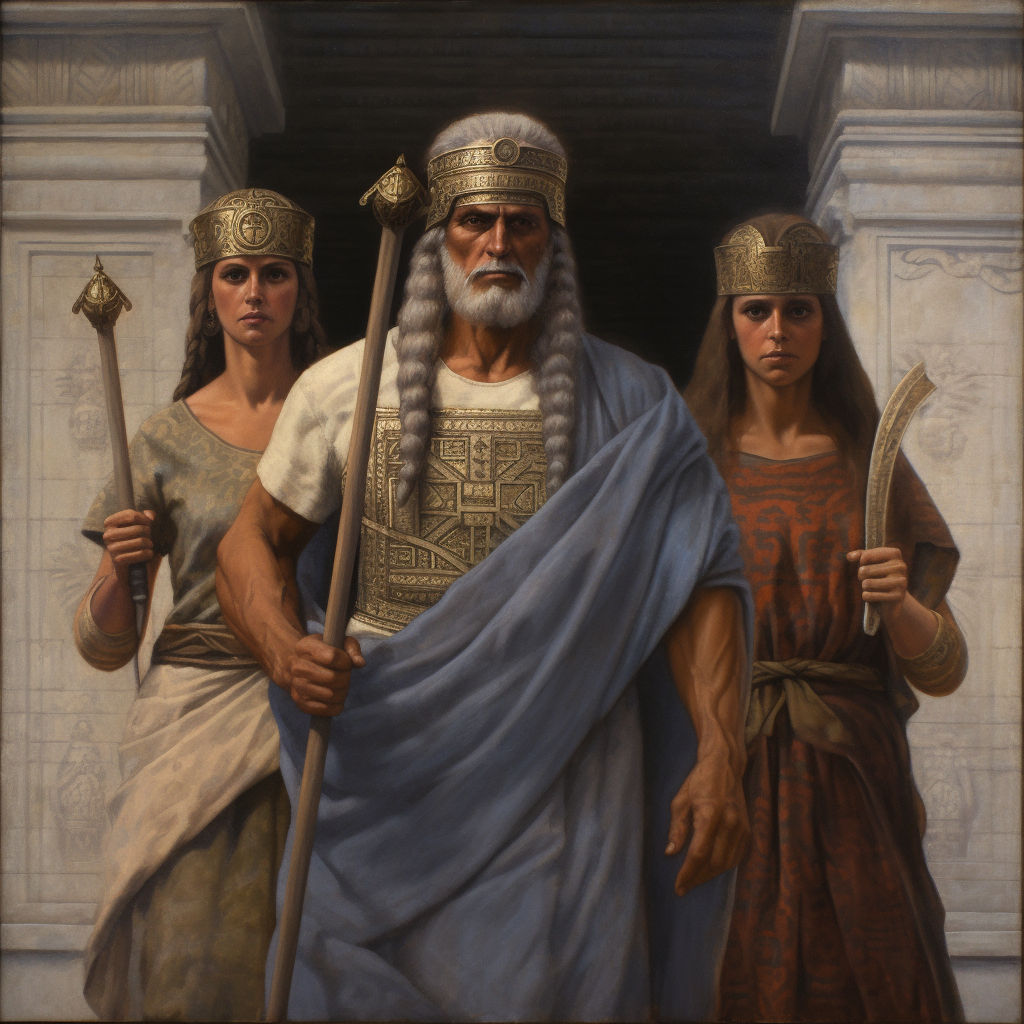
In the middle of the 100s CE, in a small village in the region of Phrygia in Asia Minor, a recent convert to Christianity fell into a prophetic trance. According to witnesses, he began to “prophesy under the influence of the Spirit” and was quickly joined by two young women named Prisca and Maximilla who began to utter prophecies themselves. These three figures soon gained devoted followers, and their movement spread throughout surrounding lands. Anyone doubting the authenticity of the prophetic proclamations was accused of lacking sufficient faith. Though their doctrines generally conformed to those of the Roman church, Montanus preached that he and the two women would be the final prophets before the imminent End of the Days, whereas by this period the Roman church was now coming to accept and teach the doctrine of a “delayed Second Coming”.11McKechnie, P. (2019). Christianizing Asia Minor: Conversion, Communities, and Social Change in the Pre-Constantinian Era. Cambridge University Press.
In the brief time remaining before the destruction of all the Earth, Montanus taught his followers to fast, avoid marriage, and to make no attempts to avoid martyrdom. The New Jerusalem spoken of in the Revelation of John—from where Jesus would reign for 1,000 years—was expected by Montanus to soon arrive in his hometown of Pepuza in Phrygia. And when the so-called Montanists were excommunicated from the Roman church at an official gathering of bishops in 177 CE, they established their own church headquarters in Pepuza. No original writings from Montanus or his sect were allowed to survive antiquity, so all we know of them comes from their detractors in the Roman church.12McKechnie, P. (2019). Christianizing Asia Minor: Conversion, Communities, and Social Change in the Pre-Constantinian Era. Cambridge University Press.

Outside of Asia Minor, Montanists had a foothold in the city of Lyons and even Rome, but it flourished most prominently across the Mediterranean in the great city of Carthage13McKechnie, P. (2019). Christianizing Asia Minor: Conversion, Communities, and Social Change in the Pre-Constantinian Era. Cambridge University Press.—beautifully rebuilt after its utter destruction by the Roman Republic centuries before. The most famous convert in that city was a church elder known as Tertullian who was a prolific writer of Christian literature in Latin,14Barnes, Timothy (1971). Tertullian: A literary and historical study . Oxford. and among other things, is remembered for coining the term “trinity” to describe the godhead in three parts.15Hillar, M. (2012). From Logos to Trinity The Evolution of Religious Beliefs from Pythagoras to Tertullian. Cambridge University Press.
As an adult convert to Christianity, Tertullian became a fierce advocate for the Roman church, writing works defending its doctrines against slurs and challenges—such as the pagan slanders that Christians sacrificed infants during the rite of the Eucharist and committed incest at their secret gatherings.16Barr, J. (2017). Tertullian and the Unborn Child: Christian and Pagan Attitudes in Historical Perspective. Taylor & Francis. He also took to the offensive, writing books against the beliefs of the gnostic Christians,17Tertullian. (2012). Tertullian Against the Valentinians. (n.p.): CreateSpace Independent Publishing Platform. against the beliefs of the Marcionites,18Tertullian. (2015). Tertullian – the Five Books Against Marcion. (n.p.): CreateSpace Independent Publishing Platform. and against the Jews.19Tertullian. (2020). An Answer to the Jews. (n.p.): Library of Alexandria.
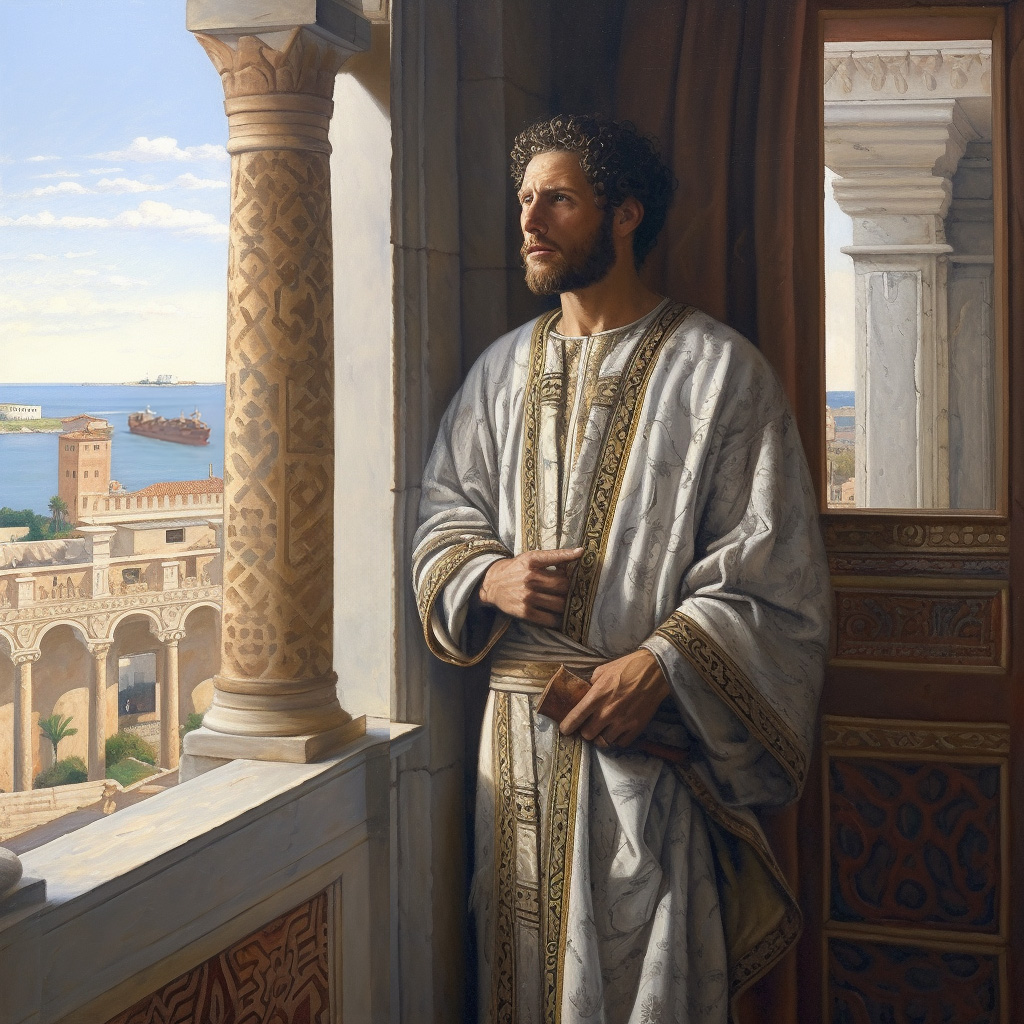
His own particular theology advanced the view that, while God the Father, Jesus Christ, and the Holy Spirit were all members of the single godhead, there was a definite difference in rank among them. God the Father stood in superior position to both Jesus and the Spirit.20Hillar, M. (2012). From Logos to Trinity: The Evolution of Religious Beliefs from Pythagoras to Tertullian. Cambridge University Press. This seemingly nitpicky argument over the ultimate relationship between the Father, Son, and Holy Spirit would go on to cause much strife in the Roman church over the course of the next century. Those believers who held that Jesus is God—that the two beings are somehow one and the same—Tertullian derided as “Father Sufferers”, for he claimed their beliefs entailed that somehow the transcendent, ineffable God experienced suffering on the cross.21Arendzen, J. P. (2004). Understanding the Trinity. United States: Sophia Institute Press.

Then in 207 CE, Tertullian joined the Montanist movement, moving him away from the strict self-designated “orthodoxy” of the Roman church. He adopted the Montanus’s preaching against marriage,22Schafer, S. (2019). Marriage, Sex, and Procreation: Contemporary Revisions to Augustine’s Theology of Marriage. United States: Wipf and Stock Publishers. and also taught that during the Eucharist the bread and wine were mere symbols of Jesus’s body and blood.23Tertullian. (2015). Tertullian – the Five Books Against Marcion. (n.p.): CreateSpace Independent Publishing Platform. He advised against baptizing infants lest they later sin and lose their salvation.24Esler, P.F. (2002). The Early Christian World. Routledge. He also taught that, when necessary, any member of the church could baptize another.25Still, T.D. & Wilhite, D.E. (2012). Tertullian and Paul. A&C Black.
Therefore, despite having once been a champion of the Roman Catholic faith whose books against the various “heretics” had been very popular, later in his life Tertullian himself was labeled a heretic and his books suppressed. Finally, unsatisfied with Montanism, Tertullian began his own sect in Carthage that survived him for at least a few generations.26Tabbernee, W. (2007). Fake Prophecy and Polluted Sacraments (Vigiliae Christianae, Supplements). Boston: Brill.
Irenaeus

Another of the Roman church’s great “Heresy Hunters” was a man named Irenaeus. Born in Smyrna on the west coast of Asia Minor, he relocated to Lyons in Gaul (France) to become the bishop of the Christian community there. He had a long career, and produced many writings, and since he was not later condemned by the Roman church, many of thse writings survive to this day. From them we know that by 200 CE, there were already Christian communities in Germany, Gaul, and among the Celtic tribes living to the north.27Freeman, C. (2009). A New History of Early Christianity. Yale University Press.

Though the Roman church had the plurality of adherents in Lyons, Irenaeus also found there Montanists and gnostic followers of Valentinus—including a preacher he refers to as “Marcos the Magician”. Competition with these sects prompted the writing of his most famous work, Against Heresy, which took on the familiar targets of Ebionite Jewish-Christians, gnostics, and Marcionites. He also composed works outlining his own particular theology. Irenaeus saw all of human history—as laid out in the Hebrew bible—as a single coherent story revealing God’s plan for the salvation of humankind. The doctrine of Original Sin, though not an invention of Irenaeus, is expounded in its clearest and most influential form to date in his writings.28Freeman, C. (2009). A New History of Early Christianity. Yale University Press.
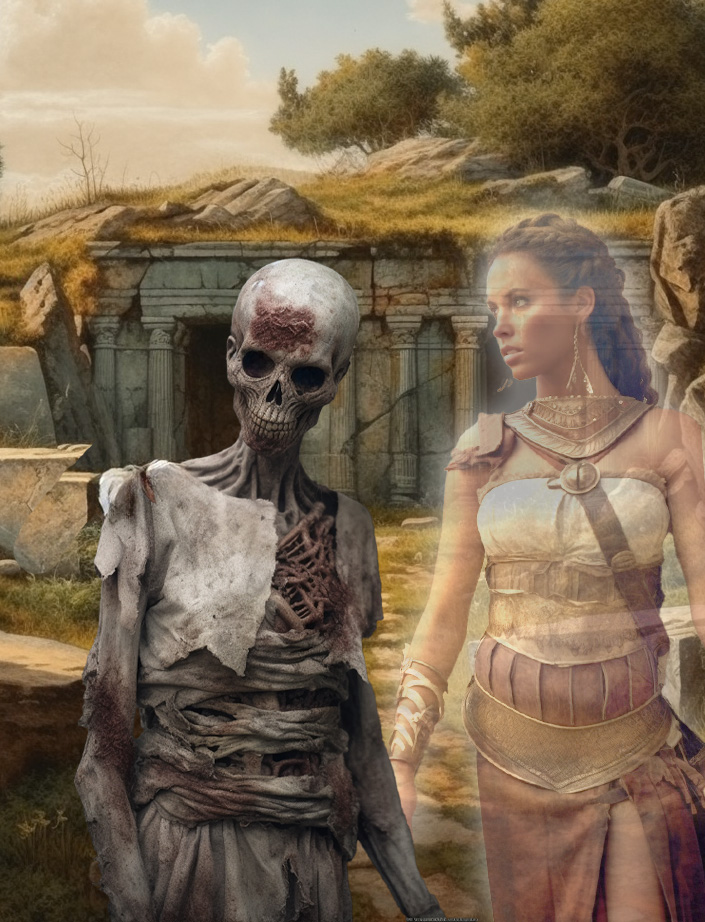
When Adam disobeyed God in the Garden of Eden, writes Irenaeus, he caused humankind to fall into a state of immaturity. To slowly but steadily increase their wisdom and maturity, God eventually introduced the Law through Moses. After a requisite amount of time under its strictures, humans had now matured to a level where God could send Jesus Christ to Earth. To Irenaeus’s thinking, it was vital that Jesus was fully human in order to redeem the sin of Adam—Jesus becomes, in this sense, a second Adam. Similarly, Irenaeus argued vehemently that the resurrection of the dead must be a return of souls to their physical, fleshly bodies.29Freeman, C. (2009). A New History of Early Christianity. Yale University Press.

Irenaeus expounded an additional peculiar doctrine that was subsequently ignored by the Roman church which would, in spite of this, later recognize him as a saint. He wrote that for Jesus to successfully make a sacrifice on behalf of all humankind, it required that he lived through all phases of human life—including old age. He therefore calculates the savior’s age at his crucifixion to have been anywhere between 44 and 57 years old. More influentially, Irenaeus is the first Christian writer to call for the acceptance of only the four gospels we know today as Mark, Matthew, Luke, and John, discounting all others. He provides no cogent argument for this policy, instead simply describing it as a natural match for there being four quarters to the Earth, four winds, and four living creatures surrounding God’s throne in the Revelation of John.30Freeman, C. (2009). A New History of Early Christianity. Yale University Press.
Ordinary Christians

Because Christian writers of this period focused their attention on other matters, we have less information than we’d like about the daily lives of average believers. But through their literature on these other matters, we do get occasional snippets of information. Tertullian of Carthage describes his community’s common ownership of all property—the way of life of the Essenes and earliest Christians. From the writings of another church patriarch, Hippolytus of Rome, we learn of a list of requirements for those wishing to join the Church of Rome.31Freeman, C. (2009). A New History of Early Christianity. Yale University Press.

Would-be initiates must state their occupation, and those who are pagan priests, gladiators, magicians, charioteers, pimps, or prostitutes are rejected outright (notwithstanding that the gospels present Jesus as having kept company with sex workers). Artists and sculptors must cease to depict any pagan gods, and actors must give up attending the theater. Teachers must quit their jobs, rejecting worldly knowledge in favor of spiritual matters. Slaves must have the express permission of their masters, and pledge to continue to obey their masters. Those accepted into the church must then undergo a three-year period of instruction before becoming full members—another Essene practice that made its way in some form into the early Church.32Freeman, C. (2009). A New History of Early Christianity. Yale University Press.
Hippolytus the Antipope
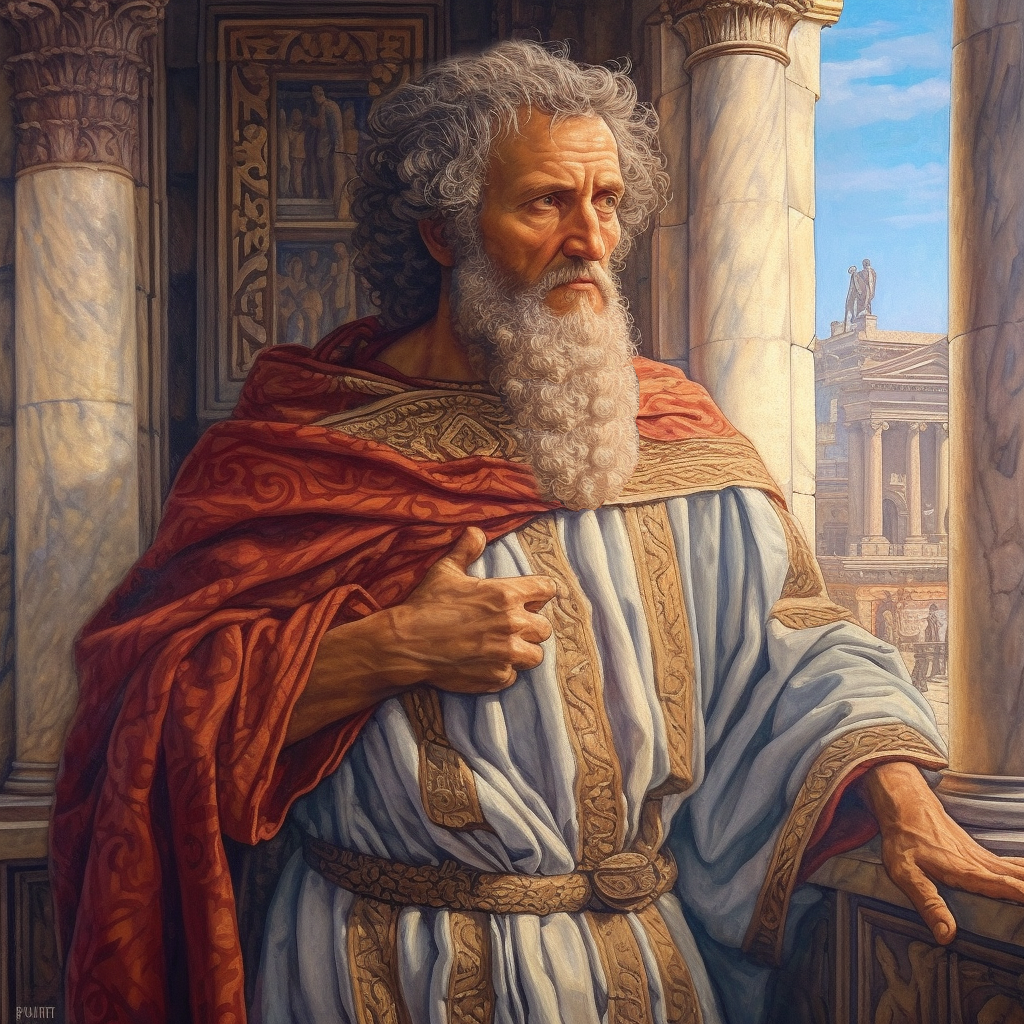
This same Hippolytus of Rome had read the theological writings of his forebears, and then composed his own work, The Refutation of All Heresies, adding to the Roman church’s continued assault on their rivals. He also took issue with some in his own church, arguing that—in their attempts at countering the notion of fully human Jesus, as espoused by the Ebionites and others—his fellow Catholics had gone too far in the other direction, describing Jesus in terms that virtually equate him with God. Hippolytus was popular enough in Rome that when he accused Pope Zephyrinus of holding such unacceptable views that should disqualify him from his position, he was able to establish himself as the first ever rival “antipope”.33“Saint Hippolytus of Rome.” Encyclopædia Britannica. (2010.) Encyclopædia Britannica Online. Only dubious historical accounts tell us about the ultimate fate of Hippolytus, but it would seem that both pope and antipope did something which upset Emperor Septimus Severus around 235 CE, and they were sentenced to work in the mines on the island of Sardinia. If legends are to be believed, the two reconciled there, and agreed to both support the same man as their successor. Both members of this pope-antipope pair were later made saints by the Catholic church.34Lapidge, M. (2018). The Roman Martyrs: Introduction, Translations, and Commentary. Oxford University Press.
Continue Reading:
Chapter 25: Rivals to Early Christianity
Footnotes
- 1Hoffman, J.R. (2009). Porphyry’s Against the Christians. Prometheus.
- 2Gottheil, R. & Krauss, S. (1906). “CELSUS (Kέλσος)”. Jewish Encyclopedia. Kopelman Foundation.
- 3Freeman, C. (2009). A New History of Early Christianity. Yale University Press.
- 4Freeman, C. (2009). A New History of Early Christianity. Yale University Press.
- 5Freeman, C. (2009). A New History of Early Christianity. Yale University Press.
- 6Freeman, C. (2009). A New History of Early Christianity. Yale University Press.
- 7Freeman, C. (2009). A New History of Early Christianity. Yale University Press.
- 8Freeman, C. (2009). A New History of Early Christianity. Yale University Press.
- 9Freeman, C. (2009). A New History of Early Christianity. Yale University Press.
- 10Freeman, C. (2009). A New History of Early Christianity. Yale University Press.
- 11McKechnie, P. (2019). Christianizing Asia Minor: Conversion, Communities, and Social Change in the Pre-Constantinian Era. Cambridge University Press.
- 12McKechnie, P. (2019). Christianizing Asia Minor: Conversion, Communities, and Social Change in the Pre-Constantinian Era. Cambridge University Press.
- 13McKechnie, P. (2019). Christianizing Asia Minor: Conversion, Communities, and Social Change in the Pre-Constantinian Era. Cambridge University Press.
- 14Barnes, Timothy (1971). Tertullian: A literary and historical study . Oxford.
- 15Hillar, M. (2012). From Logos to Trinity The Evolution of Religious Beliefs from Pythagoras to Tertullian. Cambridge University Press.
- 16Barr, J. (2017). Tertullian and the Unborn Child: Christian and Pagan Attitudes in Historical Perspective. Taylor & Francis.
- 17Tertullian. (2012). Tertullian Against the Valentinians. (n.p.): CreateSpace Independent Publishing Platform.
- 18Tertullian. (2015). Tertullian – the Five Books Against Marcion. (n.p.): CreateSpace Independent Publishing Platform.
- 19Tertullian. (2020). An Answer to the Jews. (n.p.): Library of Alexandria.
- 20Hillar, M. (2012). From Logos to Trinity: The Evolution of Religious Beliefs from Pythagoras to Tertullian. Cambridge University Press.
- 21Arendzen, J. P. (2004). Understanding the Trinity. United States: Sophia Institute Press.
- 22Schafer, S. (2019). Marriage, Sex, and Procreation: Contemporary Revisions to Augustine’s Theology of Marriage. United States: Wipf and Stock Publishers.
- 23Tertullian. (2015). Tertullian – the Five Books Against Marcion. (n.p.): CreateSpace Independent Publishing Platform.
- 24Esler, P.F. (2002). The Early Christian World. Routledge.
- 25Still, T.D. & Wilhite, D.E. (2012). Tertullian and Paul. A&C Black.
- 26Tabbernee, W. (2007). Fake Prophecy and Polluted Sacraments (Vigiliae Christianae, Supplements). Boston: Brill.
- 27Freeman, C. (2009). A New History of Early Christianity. Yale University Press.
- 28Freeman, C. (2009). A New History of Early Christianity. Yale University Press.
- 29Freeman, C. (2009). A New History of Early Christianity. Yale University Press.
- 30Freeman, C. (2009). A New History of Early Christianity. Yale University Press.
- 31Freeman, C. (2009). A New History of Early Christianity. Yale University Press.
- 32Freeman, C. (2009). A New History of Early Christianity. Yale University Press.
- 33“Saint Hippolytus of Rome.” Encyclopædia Britannica. (2010.) Encyclopædia Britannica Online.
- 34Lapidge, M. (2018). The Roman Martyrs: Introduction, Translations, and Commentary. Oxford University Press.